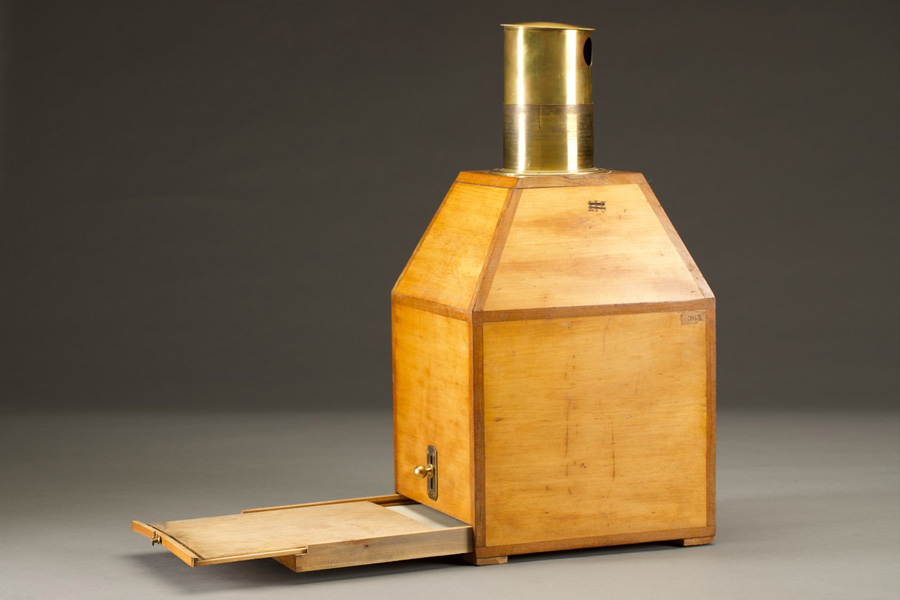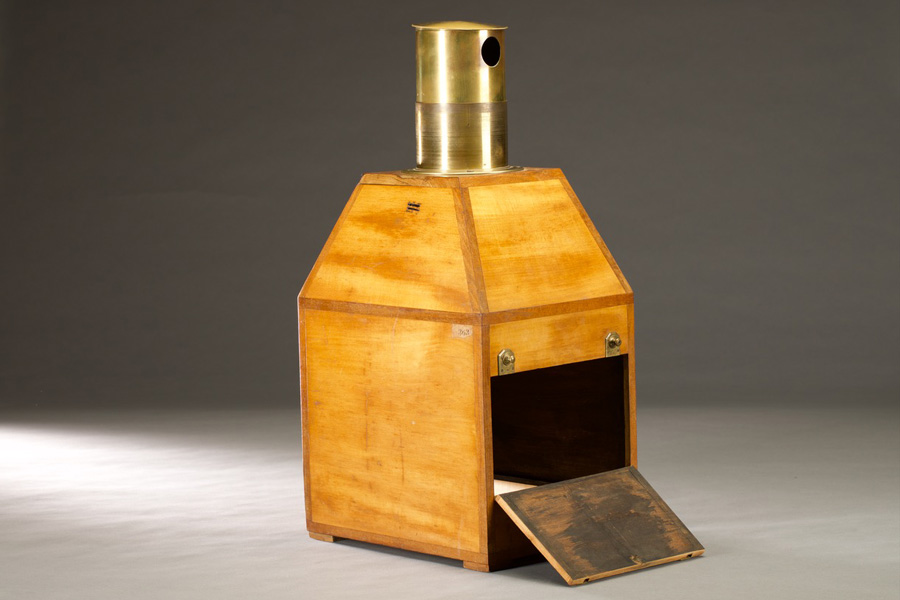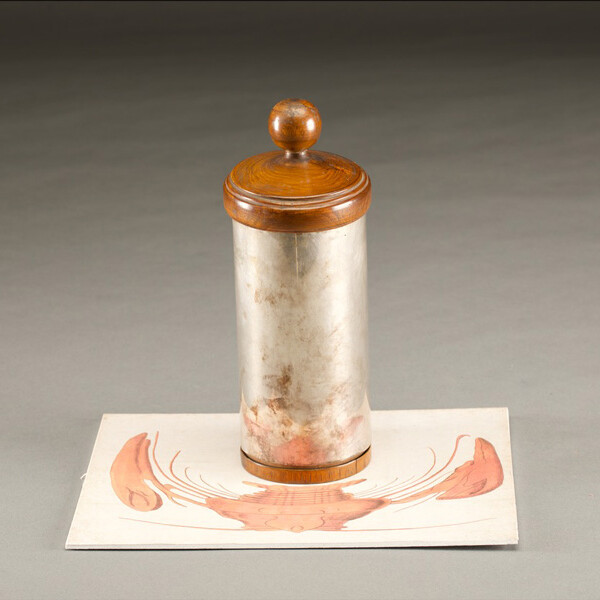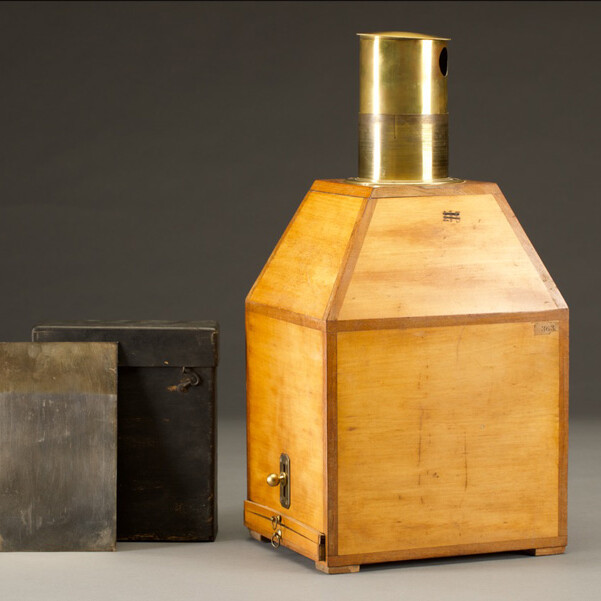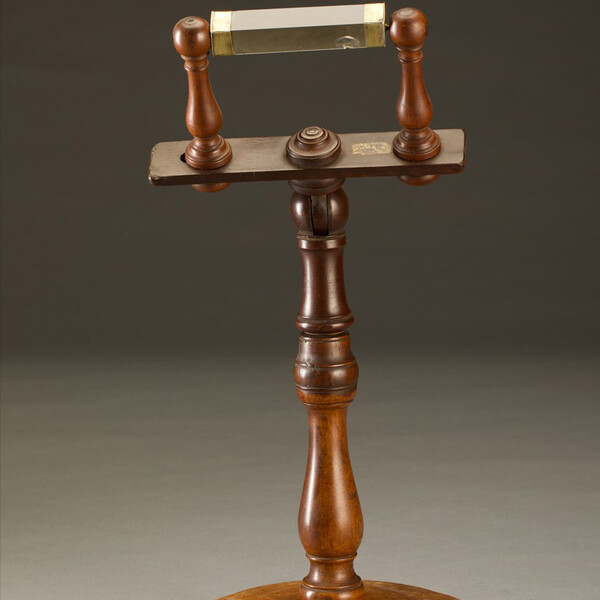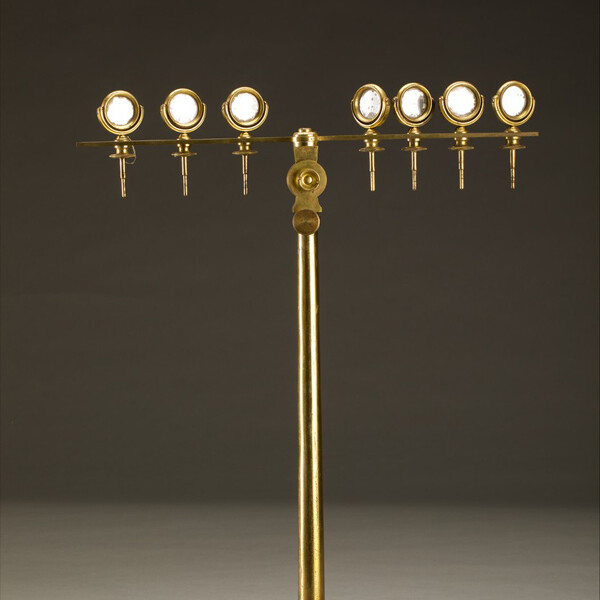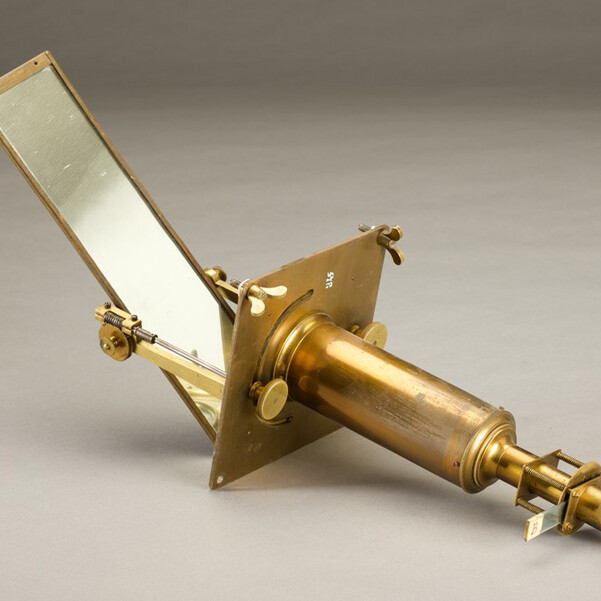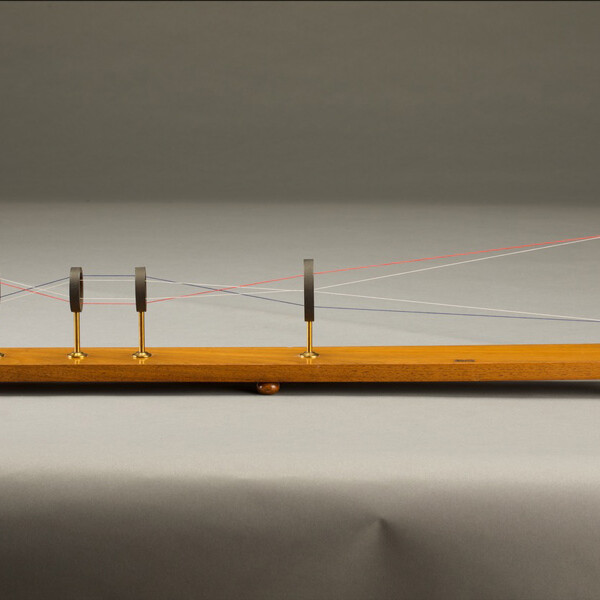The device is a camera obscura with a hatch on the side through which the inside may be seen. A white painted sliding drawer at the bottom of the box houses the plate to be exposed. In a brass tube in the upper part of the box there is a hole through which enters light from the subject to be portrayed; it is deflected downwards by a prism. On the support is engraved Combette.
The daguerrotype process by which images obtained from a camera obscura could be reproduced was invented by Frenchman Jacques Daguerre (1787 – 1851) and became widespread in 1839; it marked the birth of photography.
Highly polished sheets of silver-plated copper (4MO-a) were exposed to iodine or bromine vapour which reacted with the silver, covering its surface with silver iodide or bromide, which are light-sensitive. After exposure, the plates were exposed to mercury vapour, which reacted with the parts that had been affected by light and stabilized them. Subsequent treatment with sodium thiosulphate solution and gold chloride removed substances that had not been altered by the light, leaving a single irreproducible copy of the desired image.
Instrument on display.
